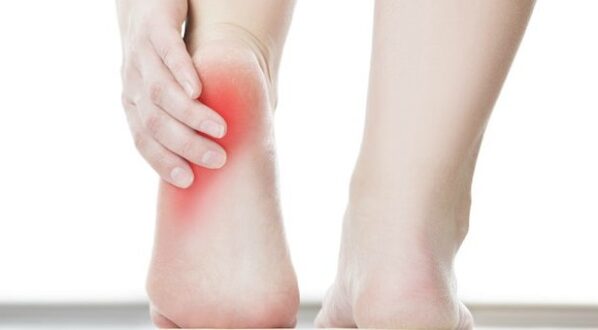Learn all about traction apophysitis of knee, heel, hip, elbow and foot.
Apophysitis, which is a common abnormality that affects the growing child, is the chronic inflammation of the traction apophysis caused by the characteristic response of the growing bone to repetitive trauma. Although MRI allows a precise diagnosis of this entity, signal characteristics on MRI, lack of imaging reports, and relative rareness in current MRI practice, make this entity difficult to diagnose. In this article, we present a comprehensive review of apophysitis of the lower limb regarding anatomy, physiopathology, clinical findings, and imaging features with special emphasis on MRI.
Apophysis is the site of attachment of tendons at long bones. They are the site of origin of insertion of major muscles or a muscle group. The epiphyseal plate is two to five times weaker than the surrounding fibrous structures (ligaments, tendons, and joint capsule) in children and adolescents. As the child grows older; the epiphyseal plate ossifies and becomes stronger. Consequently, a force causing a ligamentous or tendinous tear and degeneration in adults is more likely to cause an epiphyseal plate or apophysis lesion in a growing child
There are two types of lesions that involve traction epiphysis (apophysis). Acute epiphyseal avulsion is acute separation across the epiphyseal plate, which is usually produced by a strong muscular contraction (acute avulsion fracture of apophysis). Traumatic apophysitis is chronic inflammation of the apophysis, which is usually caused by strong repetitive contraction of a muscle attached to a traction apophysis that generates submaximal loading.
What is Traction Apophysitis?
Apophysitis refers to irritation and inflammation of the apophysis, a secondary ossification center which acts as an insertion site for a tendon. It is a common overuse injury in young athletes. In a growing athlete the apophysis is susceptible to injury because of repetitive stress or an acute avulsion injury.
Traction Apophysitis of Knee
Osgood-Schlatter Disease is apophysitis that occurs at the tibial tubercle (just below the kneecap). Sinding-Larsen-Johansson Disease is apophysitis at the patella (kneecap). Osgood-Schlatter disease is characterized by inflammation of the growth plate of the leg just below the knee at the tibial tubercle, a prominence just below the kneecap. The tibial tubercle is the bony attachment on the large bone of the lower leg (tibia) of the big, powerful thigh muscle (quadriceps) and patellar tendon. The growth plate is an area of relative weakness, and injury to it occurs due to repeated stress or vigorous exercise. It is a temporary condition of the tibial tubercle that is uncommon after age 16.
Traction Apophysitis of Heel
Sever’s disease (also known as calcaneal apophysitis) is one of the most common causes of heel pain in growing children and adolescents. It is an inflammation of the growth plate in the calcaneus (heel).The true origin of the heel pain of calcaneal apophysitis is a stress microfracture (invisible on x-ray) due to chronic repetitive microtrauma it’s an overuse syndrome that resolves without surgery in nearly all cases. Most patients experience pain relief and can resume full activities while using a simple in-shoe wedge-shaped orthotic. The most distinguishing feature on physical exam is the exquisite heel pain produced by lateral and medial compression (“squeezing”) of the heel.
Traction Apophysitis of Hip
Apophysitis is an overuse injury that typically occurs after repetitive activities of the muscles attached to the apophysis. Adolescents with excessively tight hip and thigh muscles are more prone to pelvis/hip apophysitis. The apophyses most commonly affected are the anterior superior iliac spine (ASIS), the anterior inferior iliac spine (AIIS), and the iliac crest. The muscles that attach to these apophyses flex the hip and rotate and twist the pelvis and trunk. Apophysitis of the pelvis/hip usually affects runners, sprinters, dancers, soccer players and ice hockey players. You may have dull pain in the groin or the front or side of your hip that worsens with activity. There will be tenderness over the injury site and sometimes some swelling. Apophysitis may be mistaken for a muscle strain.
Traction Apophysitis of Elbow
Medial epicondyle apophysitis, often called “little league elbow,” is the most common injury affecting young baseball pitchers whose bones have not yet stopped growing. The medial epicondyle is the attachment site for the forearm muscles used in throwing and helps to stabilize the elbow during the throwing motion. This condition is characterized by irritation and inflammation of the growth plate (apophysis) on the inner side of the elbow (medial epicondyle).
Traction Apophysitis of Foot
Iselin disease is painful irritation and inflammation of the apophysis (growth plate) at the base of the 5th metatarsal (foot bone), where one of the calf muscles inserts. In a child, the bones grow from areas called growth plates. The growth plate is made up of cartilage, which is softer and more vulnerable to injury than mature bone. Iselin disease is most often seen in physically active boys and girls between the ages of 8 and 13. It is most common in children involved in soccer, basketball, gymnastics and dance. It is very important to stretch tight calf muscles to relieve tension on the growth center. If rest, ice and stretching do not relieve the pain.
 Health & Care Information
Health & Care Information 


